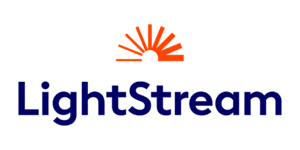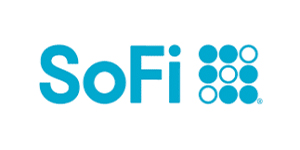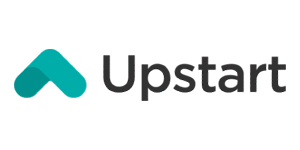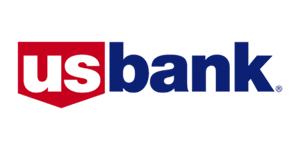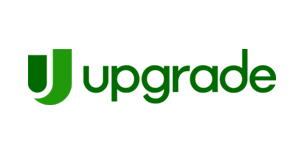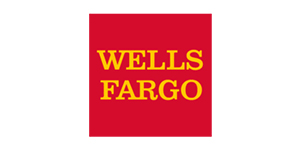How To Get a $50,000 Personal Loan
We at the MarketWatch Guides team have researched the top picks for $50,000 loans and will help you understand how to qualify for them, step-by-step.
Is a personal loan really your best choice? Consider alternatives such as home equity loans or HELOCs, as well, comparing interest rates and terms before you decide.
If you decide to go with a $50,000 personal loan, we’ve researched dozens of the country’s top lenders to narrow down our top picks.
You’ll need to meet credit score, income and debt criteria for your lenders.
Narrow down your list to three or four lenders you think you’ll qualify for and check their rates and terms without impacting your credit score.
When you’ve found your top lender, use their online application to apply. Most lenders can fund your loan within one to three business days.
The Best Lenders for a $50,000 Personal Loan
Our top choices all have flexible terms, straightforward application processes, quick approval times and a variety of loan options to cater to different needs. Most importantly, they offer competitive annual percentage rates (APR). APRs show the true cost of the loan, measuring both interest rates and fees.
- LightStream: Our top pick
- SoFi: Best customer service
- PenFed: Best for small loans
- Upstart: Best for bad credit
- U.S. Bank: Best for loyal customers
- Upgrade: Best discounts
- Wells Fargo: Best for in-person service
How To Get a $50,000 Personal Loan
To make the most informed choice, you should thoroughly understand the application process for a $50,000 personal loan.
Applying for a $50,000 Personal Loan
- Investigate lenders: Before applying for a personal loan, research and compare lenders, such as banks, credit unions and online providers. Look at factors including interest rates, repayment terms, fees, eligibility criteria. Todd Schwartz, founder of OppFi, recommends looking at customer reviews, “particularly those at third-party sites like Trustpilot and BBB. This shows how lenders or loan platforms treat their customers.”
- Seek prequalification: Some lenders offer prequalification. This usually involves a soft credit check (which doesn’t affect your credit score) to estimate your loan eligibility, including your potential loan amount and corresponding interest rate.
- Prepare required documentation: A variety of documents are typically required to apply for a personal loan, including:
- Proof of income (pay stubs, tax returns or bank statements)
- Proof of identity (driver’s license, passport or social security card)
- Employment history and contact information
- Credit history information, including your credit score

- Submit your application: Once you’ve chosen a lender and gathered all necessary documents, you can start the application process. Most lenders offer online applications, making the submission process easy to complete. Be prepared for the lender to conduct a hard credit inquiry, which may temporarily drop your credit score.
- Underwriting and approval: After you submit your application, the lender will review your information, conduct a credit check and measure your ability to repay the loan. Depending on the lender, this process can take anywhere from a few hours to a few days. “Even though a lower score might not outright disqualify you, it could result in additional conditions such as higher interest rates if you do receive approval,” William Gogolak, Assistant Teaching Professor of Finance at Carnegie Mellon, said. If you are approved, you’ll receive a loan offer specifying the terms and conditions.
- Accept the loan offer: If you’re satisfied with the loan offer, you can formally accept it by signing the loan agreement. Review the terms carefully, including the interest rate, repayment schedule and any associated fees.
- Funding: Once you’ve accepted the loan offer and completed any additional verification steps, the lender will disburse the funds into your designated bank account. This process can vary in length depending on lender policies.
- Repayment: After receiving the funds, you’ll make regular payments according to the agreed-upon fee schedule. In a MarketWatch Guides survey, the most common repayment term on a $50,000 loan was three years.
Requirements for a $50,000 Personal Loan
To qualify for a $50,000 personal loan, borrowers typically need to meet several eligibility criteria. These requirements can differ depending on the lender, but the following factors generally are always taken into consideration.
Credit Score
A strong credit score is a fundamental prerequisite for securing a personal loan of this size. Most lenders prefer borrowers with a credit score in the good to excellent range (670 or higher), indicating a history of responsible financial management.
In our survey, applicants who got approved for $45,000 to $55,000 personal loans had a range of credit scores. Almost 60% had good to excellent credit scores, but a 21% had scores below 620. The average credit score was 685.
Income Level
Income level is another crucial factor. Lenders want to ensure that borrowers have a stable source of income to repay their loans. Christopher M. Naghibi, chief operating officer of First Foundation Bank, told MarketWatch Guides that the amount of expendable income you have is a key data point to show if you’re able to repay the loan.
“Your income from your job and your expenses on your credit report play a pretty big role,” he said. “It's really your cash flow that determines how much you can borrow.” The higher your income, the more likely you are to qualify for a larger loan.
Debt-to-Income (DTI) Ratio
Lenders will also evaluate your debt-to-income ratio, the percentage of your monthly income that goes toward paying existing debts. A lower DTI ratio (43% or less) is preferred as it shows your ability to handle additional debt and indicates a lower financial risk for the lender.
Borrowers with excellent credit scores, higher income levels and lower DTI ratios are more likely to secure a $50,000 personal loan with lower interest rates and more favorable terms. On the other hand, borrowers with lower credit scores, income levels or higher DTI ratios may still qualify but will likely face higher interest rates and stricter terms to mitigate lender risk.
>> Related: Learn more about the requirements to get a personal loan
Alternatives to a $50,000 Personal Loan
While a personal loan might seem ideal for obtaining $50,000, it may not be your best option. There are alternative lending options for securing $50,000 that may better suit your circumstances, including:
Home Equity Line of Credit (HELOC)
A HELOC is a revolving line of credit (similar to a credit card) that allows you to borrow against your home’s equity. HELOC interest rates tend to be lower than those of personal loans. However, you must weigh the risks associated with using your home as collateral, as defaulting on payments could lead to foreclosure. Learn more about HELOCs here.
>> Related: What is a HELOC?
Home Equity Loans
Similar to a HELOC, a home equity loan allows you to borrow against your home's equity, providing you funds in a lump sum upfront at a lower interest rate. However, like HELOCs, home equity loans come with the risk of losing your property if you cannot repay the loan. Read more about home equity loans here.
>> Related: What is a Home Equity Loan?
Peer-to-Peer Lending
Peer-to-peer (P2P) lending is an online platform that connects borrowers with individual investors willing to lend them money. P2P lending tends to be more forgiving of those with bad credit compared to personal loan lenders, but interest rates are typically higher. To explore this option, sign up on a P2P lending platform, create a listing profile (providing details of your loan request) and wait for investors to fund your loan. Find out more about peer-to-peer lending here.
>> Related: What is Peer-to-Peer Lending?
Things To Consider When Applying
Securing a $50,000 personal loan is a significant commitment. The decision-making process should not be taken lightly. Think carefully about the loan itself. The borrowed funds must be used responsibly for their intended purpose.
In our survey, the majority of borrowers used personal loans for home improvement projects, with debt consolidation and car financing taking the second and third spots.
You also need a solid repayment plan. Assess your current income, expenses and any existing debts. Ask yourself: Can I comfortably afford the monthly loan payments without straining my finances? In our survey, 78% of loan recipients never missed a loan payment, while 22% missed one or more. A detailed budget can help determine how a personal loan fits your financial picture.
Last, seek guidance from a financial advisor or expert to gain more insights into the application process and better understand a personal loan’s long-term financial implications. Their expertise can help you make a well-informed decision that will likely save you money in the long run.
Frequently Asked Questions about $50,000 Personal Loans
The time it takes to pay off a $50,000 loan depends on your term. When you apply for a personal loan, you’ll choose a repayment term, which is typically from 12 months to five years, and you’ll repay the same monthly payment each month until your loan is paid off. Usually, with longer terms, you’ll have smaller monthly payments but you’ll pay more in interest, which makes your loan more expensive.
In general, you need a credit score of 670 or higher to qualify for most personal loans, although some of our lenders (such as Upstart) will consider lower credit scores.
However, to secure a loan with the best terms and lowest interest rates, you’ll need a credit score of 725 or higher. Check with one of the credit bureaus — Equifax, Experian or TransUnion — to determine your current credit score. Remember that lenders also consider other factors such as your income, DTI ratio and employment history when determining eligibility.
The biggest personal loan you can get depends on your creditworthiness, income and lender policies. Personal loans typically range from a few thousand dollars to $100,000 or more for well-qualified borrowers. Some lenders may offer larger loans for specific purposes, such as home renovation or debt consolidation.
If you have good to excellent credit, online lenders make it very easy to get approved for a personal loan with their automated underwriting systems. Many lenders on this list can fund a personal loan within a day or two of your application.
If you have bad to fair credit, the easiest personal loan to get approved for may be a secured loan. A secured loan requires you to put up collateral, such as a paid-off vehicle or savings account, in order to qualify. These types of loans give a lender more security because if you miss a payment, the lender can take your collateral. Some secured loans, such as payday or title loans, can be considered predatory and charge you large fees and high interest rates. Avoid this type of loan if you can.
Methodology: Our System for Ranking the Best Personal Loans
Our team put together a comprehensive 100-point rating system to evaluate personal loan companies. We gathered data points from 28 of the most prominent lenders in the US and analyzed disclosures, licensing documents, sample loan agreements, marketing materials and websites. Our rating system takes into account four broad categories.
- Affordability (35%): How expensive each company’s loans are to pay back.
- Loan features (35%): The breadth of loan terms and features available to prospective customers.
- Customer experience (20%): Ease of application, prequalification and customer service interactions.
- Company reputation (10%): An exploration of lenders’ Better Business Bureau files, customer reviews and outstanding regulatory actions.
Our top-rated lenders may not be the best fit for all borrowers. To learn more, read our full personal loans methodology.
Editor’s Note: Before making significant financial decisions, consider reviewing your options with someone you trust, such as a financial adviser, credit counselor or financial professional, since every person’s situation and needs are different.
If you have feedback or questions about this article, please email the MarketWatch Guides team at editors@marketwatchguides.



